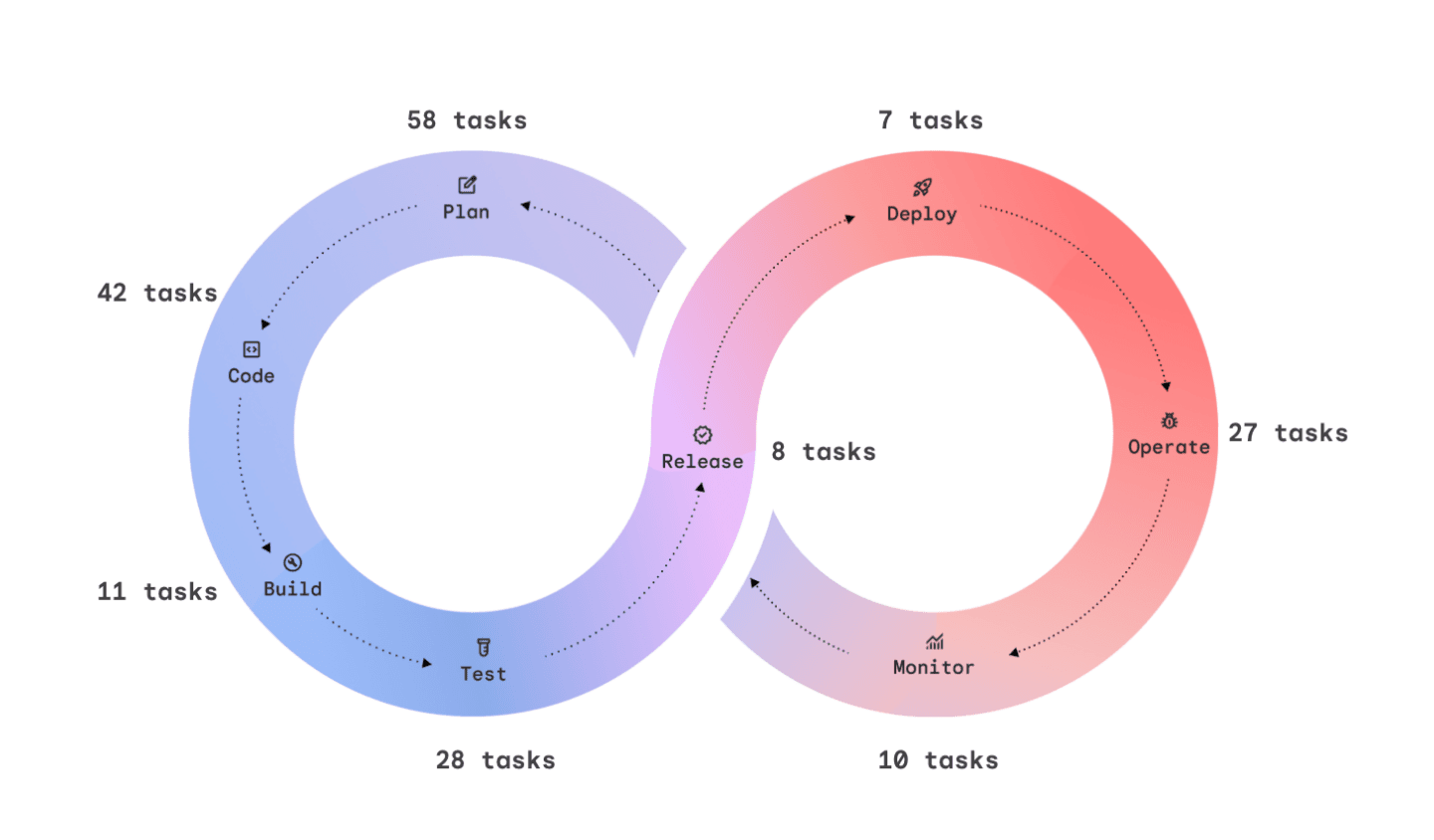The writing is on the wall: AI is reshaping what it means to be a software engineer. While most developers are already experimenting with AI tools, the gap between casual usage and true AI mastery is widening fast. The engineers who determine how to harness AI's full potential will solve fundamentally different problems and deliver previously out-of-reach solutions.
Google released research that cuts through the hype to reveal precisely what separates AI-native developers. Their comprehensive study maps out the 12 core competencies and systematic approaches defining world-class AI-driven engineering and offers a clear blueprint for developer excellence in 2025 and beyond.
If you're leading an engineering team, this is the foundation for building a competitive advantage in an AI-first world.
The 12 goals that define AI-driven engineering
Google partnered with the Education Development Center to conduct a 5-month study using the DACUM methodology. They recruited 21 participants who are experienced developers at the cutting edge of AI tool usage. They work in organizations where AI coding tools are deployed team-wide, with extensive daily experience using GenAI tools for at least 6 months. They submit PRs several times per week containing AI-generated code that has undergone significant iterations. Additionally, participants needed to demonstrate that AI had a "major" or "transformative" impact on their workflows, contribute novel AI use cases not yet reported in literature, and actively mentor colleagues in AI tool adoption.
The research revealed that AI-enhanced developers organize their work around 12 distinct goals that span the entire software development lifecycle.
Planning and investigation
- Contextualize work comprehensively - Using AI to synthesize user feedback, analyze competitors, and understand system architecture.
- Locate relevant information - Leveraging AI to research technologies, libraries, and documentation.
- Explore technical solutions - Using AI to optimize performance, complexity, cost, and maintainability.
- Develop documented plans - Creating implementation roadmaps with AI assistance.
Implementation and quality
- Produce high-quality code - Converting designs to code and reducing complexity.
- Create holistic test coverage - Using AI to identify failure points and generate comprehensive tests.
- Generate assets - Creating images, captions, and other resources through AI tools.
- Produce up-to-date documentation - Generating and maintaining comprehensive documentation.
Compliance and operations
- Ensure legal/privacy compliance - Using AI to assess potential violations and generate security tests.
- Monitor and generate insights - Combining AI with traditional approaches for anomaly detection.
- Investigate production issues - Using AI to analyze logs, traces, and error patterns.
- Improve system reliability - Proactively identifying failure conditions and mitigation strategies.
The researchers created an extensive list of 75 tasks that fit into these goals and mapped them to the software development lifecycle.

The research also identifies a consistent 6-step AI usage pattern that the participants applied to working with AI at all steps of the development process:
- Identify - Determine what information AI tools need based on their understanding of AI capabilities and the business/technical context.
- Engage - Express needs with proper context, problem statements, and desired outcomes beyond simple prompting.
- Evaluate - Critically evaluate AI-generated artifacts against domain knowledge, including sandbox testing and comparison with expected results.
- Calibrate - Guide AI tools toward desired outcomes with feedback and additional context about systems, products, goals, and trade-offs.
- Tweak - Improve AI-generated artifacts based on knowledge of expected standards and requirements.
- Finalize - Produce final documentation and communicate decisions and approaches.
The T-shaped map for how to level up in the AI era
The researchers argue that software engineers must use AI to level up deep expertise and broad knowledge by understanding and effectively using generative AI, including its capabilities, limitations, and interaction patterns. At the core, engineers must maintain strong software engineering fundamentals, including coding proficiency, system design, risk assessment, and debugging skills. This is where most of the first generation of AI tools has focused because they help developers acquire technical knowledge and write code more efficiently.
Beyond this foundation, engineers must expand their knowledge in two key areas: staying updated with adjacent software engineering domains such as cybersecurity, industry regulations, and emerging trends, and developing awareness of non-engineering factors like business context, user needs, and market dynamics.

The researchers offer four significant pieces of advice to help your engineering organization responsibly adopt AI:
- Junior developers need more support. Less-experienced developers often take longer to solve complex tasks using AI. They need additional training in foundational programming principles before they can effectively leverage AI tools for more advanced use cases.
- The future developer looks like today's senior developer. To fully realize AI's productivity benefits, developers need the skills and knowledge of today's senior developers. This means significant upskilling initiatives across your organization.
- Planning work is expanding. AI frees developers from repetitive tasks, allowing them to spend more time in the planning stages, better understand requirements, explore solutions, and make technical decisions.
- Soft skills are more critical than ever. Strong communication and collaboration skills enable developers to seek help when they reach AI's limits and forge meaningful relationships as AI handles routine interactions.
Use AI to achieve a competitive advantage
Organizations that master AI-enhanced development will be fundamentally different; they'll make better technical decisions, optimize for business and engineering metrics, and continuously experiment under shorter cycles to find optimal solutions. Research is showing growing productivity improvements for developers using AI tools effectively. However, the real advantage comes from elevating the entire development process, from planning through operations to a higher level of sophistication and decision-making quality.
Google’s research represents one of the most comprehensive studies of professional AI-enhanced software development to date. For engineering leaders ready to future-proof their organizations, these insights provide the foundation for building truly competitive development capabilities in the age of AI.
If you want to build on the ideas in this post, we’ve published a detailed DevEx guide to AI-driven software development that closely examines how teams adopt AI in practice. It introduces the AI collaboration matrix, a framework for understanding where your organization sits on the spectrum from human-led to AI-led work, and shares survey data from over 400 engineering leaders about their real-world adoption patterns.
The guide also explores common pitfalls teams face when integrating AI, like shallow experimentation or lack of context, and it provides case studies of how companies like Meta and Google use AI to improve testing and speed up large-scale migrations. The guide helps you think more systematically about where AI fits in the SDLC, how to support developers effectively, and what strategic choices can make AI a true force multiplier rather than a one-off tool.




